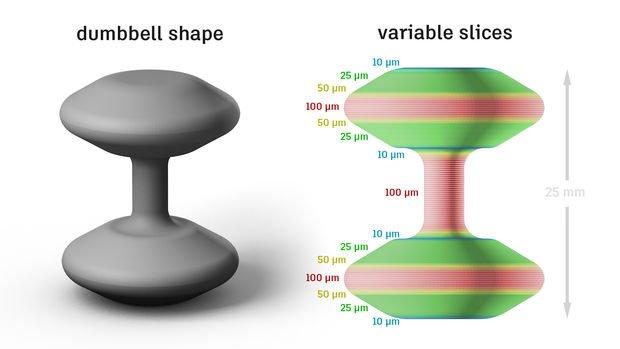
The question is not whether your 3D printer can print out high-resolution objects, but rather how long it will take. As Kranz points out, if you manipulate your slicing properly, you can have the best of all worlds.
“If your slices are thick, it prints fast but the individual layers are obvious,” says Kranz. “If you slice thin layers, the part looks nicer but it takes longer to print. What if you could have the best of both all in the same print?”
The new algorithm automatically slices .stl files and variable layer heights to optimize for both print speed and resolution. For any 3D printer, there is an optimum layer thickness (such as 50 microns for the Ember 3D printer). This is where striking the perfect balance for the best prints comes in. You don’t want to slice too thickly or too thin.
“Thicker slices are okay at the bottom; thinner slices are great at the top,” says Kranz.
Taking each .stl file, the VariSlice program checks out the slopes of all triangles and then slices them at whatever thicknesses will allow for the best speed and resolution whether you are creating a cone, pyramid, or prism shape. The process gets more complex, however, when each of the sections of a shape (like a dome) has a different slope.
The unique algorithm, both open-source and free, offers automated slicing so that you don’t have to worry about overlapping, interleaving, or stair stepping. Speed can be varied for quality levels depending on the object and its geometry, but users will be able to look forward to printing that is up to ten times faster.
The key is that you will see mostly thicker layers, but the thinner layers are catching the ‘fine details.’ This is a great algorithm to use if you are experimenting with speed, resolution, and different results. It allows you to break the rules a little as you work to come up with the best slicing techniques for varying objects. Let us know what you come up with! Discuss in the VariSlice forum at 3DPB.com.
[Source: Hackaday]